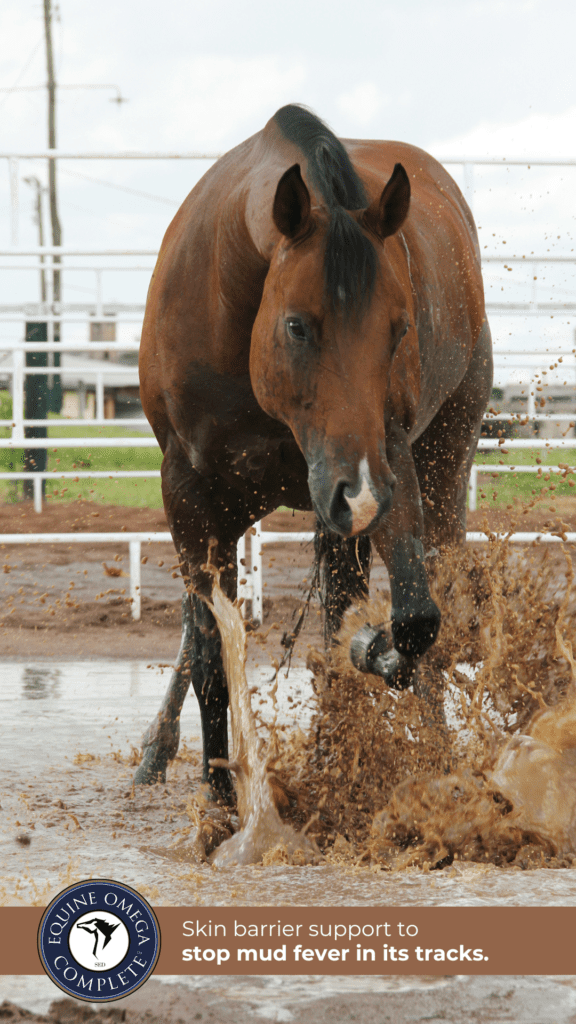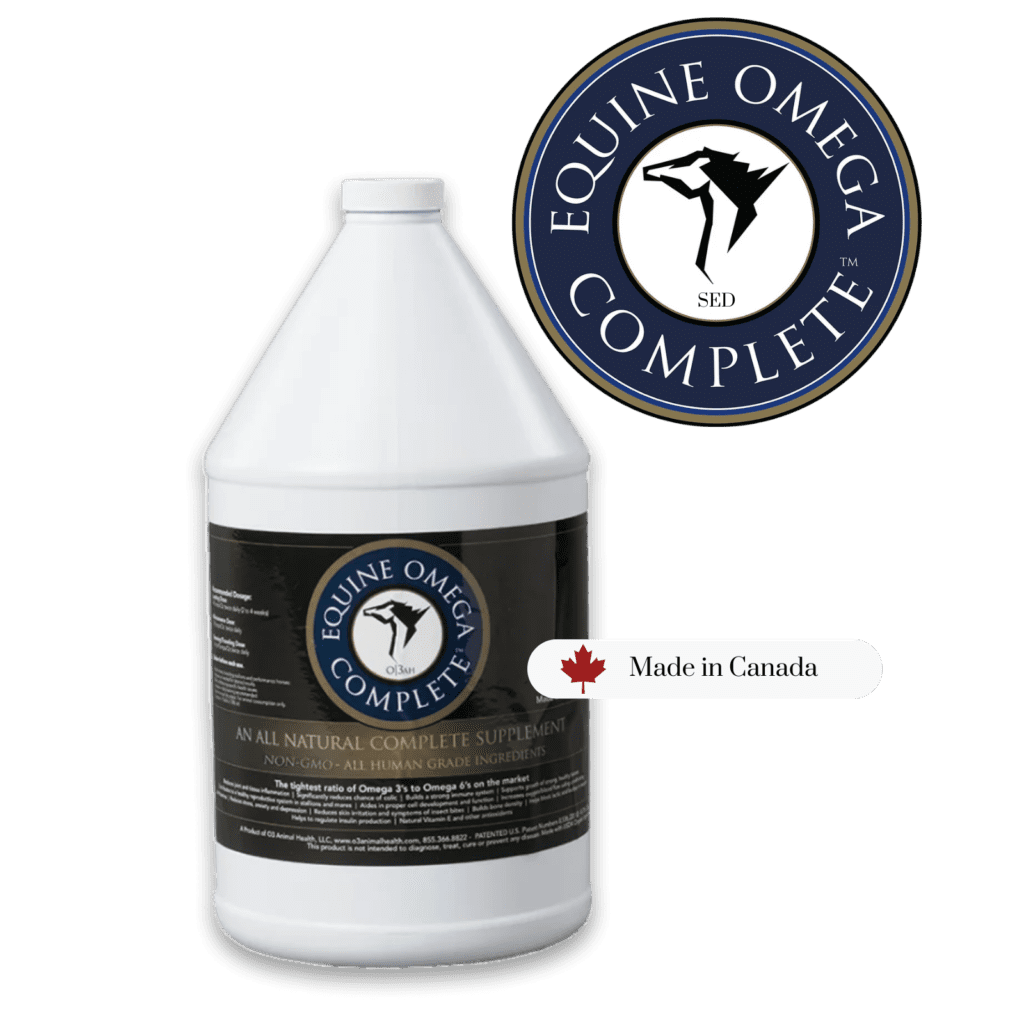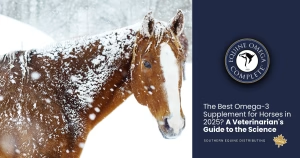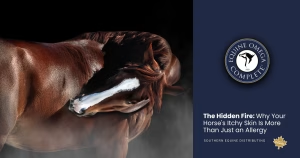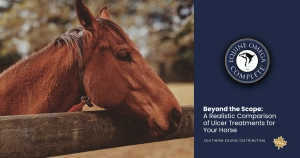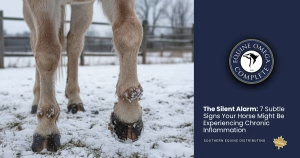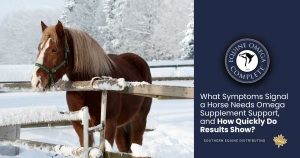Mud fever, also known as pastern dermatitis, is a common skin condition that affects horses, especially during wet and muddy conditions. Understanding the common causes of mud fever is essential for horse owners to take proactive measures to prevent and manage this troublesome skin condition. In this comprehensive guide, we will delve into the causes, symptoms, and most importantly, the effective treatment of mud fever.
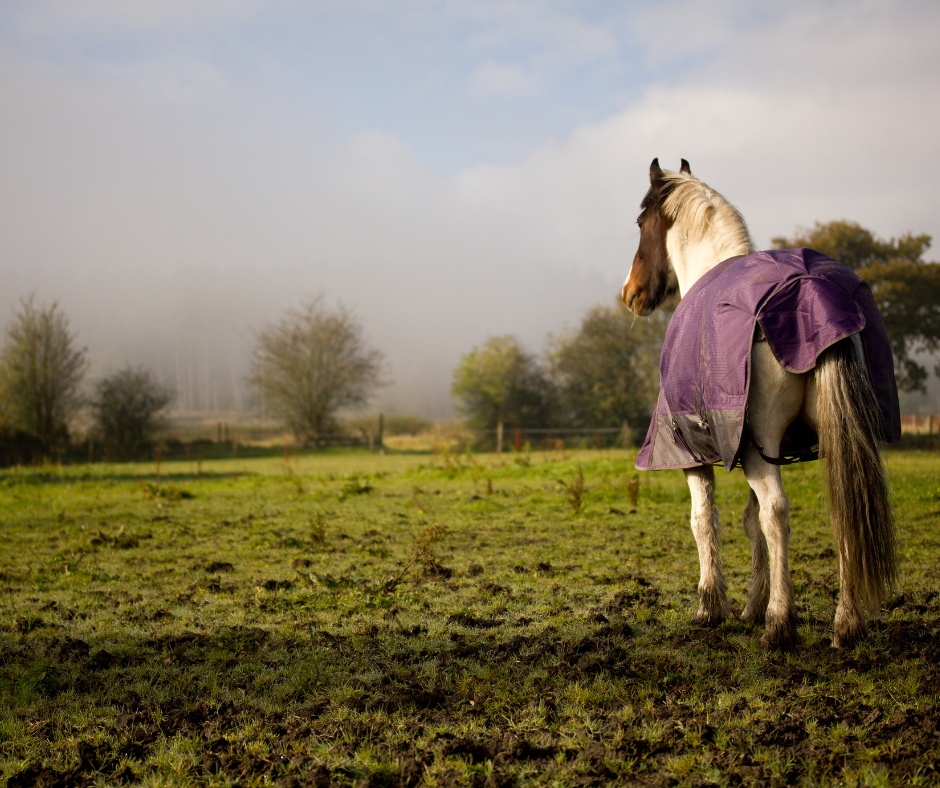
Causes of Mud Fever
While mud fever can occur at any time of the year, it is more prevalent during wet and muddy conditions, making it a common concern for horse owners.
Bacterial Infection
One of the primary causes of mud fever is a bacterial infection. The moist and muddy environment creates an ideal breeding ground for bacteria, particularly the opportunistic bacterium known as Dermatophilus congolensis. When the skin is exposed to mud and constant moisture, the bacteria can penetrate the hair follicles and the damaged skin, leading to the development of mud fever.
Environmental Factors
The environment plays a significant role in the development of mud fever. Wet and muddy conditions soften the skin, making it more susceptible to damage and bacterial invasion. Horses kept in damp or muddy paddocks or frequently exposed to wet weather are at a higher risk of developing mud fever due to prolonged exposure to moisture.
Compromised Skin Barrier
The skin acts as a barrier that protects the underlying tissues from infections and external irritants. However, when the skin becomes compromised due to injuries, cuts, or abrasions, it creates an entry point for bacteria. Mud fever is more likely to occur in horses with compromised skin, as the bacteria can easily enter and cause infection.
Predisposing Factors
Certain factors may predispose horses to developing mud fever. Horses with heavy feathering, such as draft breeds, may be more susceptible as the mud can become trapped in the hair, creating a moist and ideal environment for bacterial growth. Additionally, horses with white legs or pink skin may be at higher risk due to their potentially more sensitive skin and reduced pigmentation, which provides less protection from UV radiation.
By addressing environmental factors, ensuring proper wound care, and providing the necessary support for the skin’s health, horse owners can reduce the risk of mud fever and maintain their equine companions’ overall well-being.

Signs of Mud Fever
So now that you know why mud fever occurs, let’s talk about potential symptoms.
It is important to note that the clinical signs of mud fever can vary in severity from mild to severe, depending on individual horse characteristics, environmental conditions, and the presence of any predisposing factors. Early detection and appropriate treatment are vital to managing mud fever effectively and preventing further complications.
Scabs and Lesions
One of the hallmark signs of mud fever is the formation of scabs and lesions on the horse’s pasterns and heels. These scabs can vary in size and may appear as small, raised bumps or larger, crusty patches. Over time, the scabs can become thick and adherent, making them difficult to remove without causing discomfort to the horse. The presence of scabs is a clear indicator of the skin’s compromised condition and the need for immediate attention.
Swelling, inflammtion, and heat
Mud fever often leads to swelling, inflammation, and heat in the affected areas. The skin around the pasterns and heels may become puffy and tender to the touch. The heat is a result of the body’s immune response to the bacterial infection and inflammation. Swelling and heat are signs that the body is attempting to fight off the infection, but they can also contribute to pain and discomfort for the horse.
Pain and Sensitivity
Horses affected by mud fever may exhibit signs of pain and sensitivity in the lower limbs. They may be reluctant to bear weight on the affected leg or show signs of lameness. Pain can be exacerbated when pressure is applied to the swollen and inflamed areas, making it challenging for the horse to move comfortably.
Oozing
Mud fever can cause the formation of discharge, which may appear as a thick, yellow or white substance oozing from the affected skin. This discharge can contribute to the formation of scabs and can be a breeding ground for bacteria, further complicating the condition.
Hair Loss and Cracked Skin
As it progresses, mud fever can lead to hair loss in the affected areas. The skin may become dry and cracked, making it more susceptible to further infection and discomfort for the horse. The loss of hair and the presence of open cracks in the skin can be an indication of the severity of the condition and the need for immediate intervention.
Treating Mud Fever
Prompt and effective treatment is essential to alleviate symptoms and prevent further complications. While there are a number of solutions available for horse owners, we truly believe that Equine Omega Complete® (EOC) is a powerful ally in mud fever treatment, offering unique benefits that support skin health, combat inflammation, and boost the horse’s immune system. We’ll talk more about that in a moment.
Immediate Care and Management
Immediate care and management play a crucial role in managing mud fever. Here are some things you can do to take immediate action in assisting your horse’s recovery.
Gentle Cleaning and Drying Affected Areas
The first step in mud fever treatment is gentle cleaning and drying of the affected pasterns and heels. Use a mild antiseptic solution or diluted betadine to cleanse the area, removing dirt and debris. Pat the skin dry with a clean, soft cloth to avoid any further irritation. Avoid harsh scrubbing, as it can exacerbate the inflammation and discomfort.
Clipping the Hair for Better Air Circulation
Once the area is clean and dry, consider clipping the hair around the affected pasterns and heels. This helps improve air circulation and prevents moisture from becoming trapped, reducing the risk of bacterial growth. Clipping also facilitates the application of topical products and allows for better observation of the skin’s condition.
Providing Clean, Dry Bedding
To prevent mud fever from worsening or recurring, ensure that your horse’s living environment is clean and dry. Use clean and absorbent bedding to keep the pasterns and heels free from excess moisture and mud. Regularly check the bedding for dampness and replace it as needed.

Topical Products
Utilizing topical products with antiseptic properties can aid in the healing process. Here are some of the most common types of topic products for mud fever:
Antiseptic Washes and Shampoos
Antiseptic washes and shampoos are essential in preventing bacterial growth and maintaining skin hygiene. Look for products containing ingredients like chlorhexidine, povidone-iodine, or tea tree oil, as they have natural antiseptic properties. Dilute the wash or shampoo as directed and apply it to the affected areas, gently massaging it into the skin.
Medicated Creams and Ointments
Medicated creams and ointments formulated for mud fever can provide targeted relief and promote healing. These products often contain active ingredients like zinc oxide, which offers protective and soothing effects for irritated skin. Apply the cream or ointment after cleansing and drying the area thoroughly.
The Obvious Favourite: Equine Omega Complete
This article wouldn’t be “Complete” without us talking about our favourite tool for treating and preventing future mud fever flair-ups: EOC! But what makes Equine Omega Complete a good alternative to other topical products?
Put simply: it’s all-natural and packed with essential nutrients that target specific inflammatory concerns while also supporting your horse’s overall health.
Equine Omega Complete is formulated with omega-3 fatty acids that combat inflammation throughout your horse’s body, not just where the mud fever is present.
Omega-3 fatty acids, such as DHA and EPA, play a crucial role in reducing inflammation in the body. By incorporating EOC into the horse’s diet, you can effectively combat the inflammatory response associated with mud fever and promote a healthier environment for healing.
EOC is also made with vitamin E, an essential antioxidant, that plays a vital role in protecting skin cells from oxidative damage and promoting overall skin health. In mud fever treatment, vitamin E helps strengthen the skin’s integrity and enhances its ability to recover from the effects of inflammation.
EOC’s powerful combination of omega-3 and omega-6 fatty acids and vitamin E helps nourish skin cells from within. By providing essential nutrients, EOC supports the integrity of the skin barrier, aiding in faster healing of damaged skin. The improved skin integrity helps create a protective barrier against further bacterial invasion, reducing the risk of recurrence.
Additionally, this combination supports a healthy immune system, which is crucial in combating infections and promoting recovery. Feeding EOC can help your horse’s body better defend against infections, including those associated with mud fever.
When you choose EOC, you are choosing an all-natural, science-backed, and show-safe supplement that can be used indefinitely, without any rebound effects, and will support your horse’s overall health and well-being.
Equine Omega Complete
This blend of DHA and EPA essential omega fatty acids and all-natural, human-grade vitamin E contains anti-oxidant and anti-inflammatory properties that contribute to overall horse health and targeted support for joint pain, ulcer prevention, healthy hooves, and a shiny coat.

